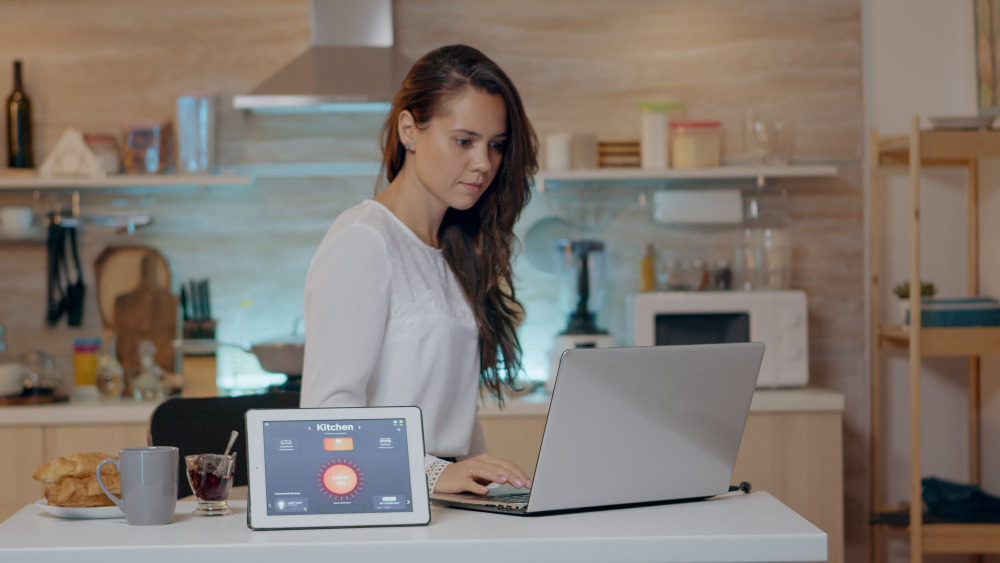Modern technology has revolutionized how we approach personal safety and home security, particularly for those who value their independence. Smart protection systems offer peace of mind while preserving the autonomy that many people cherish in their daily lives, notes Heritage Management.
Whether you’re a senior aging in place, a young professional living alone, or someone with mobility challenges, smart security solutions can enhance your quality of life without compromising your freedom. These systems work quietly in the background, providing protection and support when you need it most.
The Foundation of Smart Home Protection
Smart protection begins with understanding your unique needs and lifestyle. Unlike traditional security measures that can feel restrictive or invasive, modern systems adapt to your routines and preferences.
These technologies include motion sensors that learn your daily patterns, smart locks that allow trusted individuals access during emergencies, and environmental monitors that detect potential hazards like smoke, carbon monoxide, or water leaks. The key advantage lies in their ability to provide security without constant monitoring or intervention.
Building Layers of Protection
Personal Emergency Response Systems
Wearable devices have evolved far beyond simple panic buttons. Today’s personal emergency response systems can detect falls automatically, monitor vital signs, and connect you instantly with emergency services or designated contacts. These devices work both inside and outside the home, ensuring protection wherever life takes you.
Smart Environmental Monitoring
Your home environment plays a crucial role in your safety and well-being. Smart sensors can detect temperature fluctuations, unusual humidity levels, or air quality issues that might affect your health. These systems can automatically adjust your thermostat, send alerts to family members, or even contact emergency services if dangerous conditions are detected.
Intelligent Access Control
Smart locks and doorbell cameras provide security while maintaining convenience. You can grant temporary access to caregivers, family members, or service providers without needing to be present. Video verification ensures you always know who’s at your door, while automated locking systems provide peace of mind if you forget to secure your home.
The Power of Connected Communities
Smart protection extends beyond individual homes to create networks of support within communities. Neighbors can receive notifications about unusual activity, and local emergency services can access real-time information during crisis situations.
Some communities have implemented neighborhood watch programs enhanced by smart technology, where residents can opt into alert systems that notify them of suspicious activity or emergency situations nearby. This collective approach to safety strengthens community bonds while respecting individual privacy.
Addressing Rural and Remote Living Challenges
For residents in rural areas, smart protection takes on additional significance. Limited emergency response times and remote locations can make traditional security measures less effective. A reliable home security alarm system in North Dakota, for example, might need to account for harsh weather conditions, limited internet connectivity, and longer emergency response times.
Satellite-based communication systems can ensure your smart protection devices remain connected even when traditional internet services fail. Battery backup systems and alternative power sources keep your security systems operational during power outages, which can be more frequent and longer-lasting in rural areas.
Integration with Healthcare and Wellness
Smart protection systems increasingly integrate with healthcare monitoring, creating comprehensive wellness platforms. Medication reminder systems, vital sign monitoring, and telehealth connections can all be part of your home’s smart ecosystem.
These integrations allow healthcare providers to monitor patients remotely while respecting their independence. Family members can receive health-related alerts without constant check-ins, and emergency responders can access critical medical information when needed.
Privacy and Control Considerations
Maintaining control over your personal information remains paramount when implementing smart protection systems. Look for systems that allow you to control data sharing, choose which family members or caregivers receive alerts, and maintain ownership of your personal information.
Many systems now offer local processing options, where data is analyzed within your home rather than being sent to external servers. This approach provides the benefits of smart technology while keeping your personal information private.
Choosing the Right Smart Protection System
Selecting appropriate smart protection technology requires careful consideration of your specific needs, living situation, and comfort level with technology. Start with basic systems and gradually add features as you become more comfortable with the technology.
Consider factors such as ease of use, reliability of the service provider, integration capabilities with existing devices, and the level of professional monitoring you prefer. Many systems offer trial periods or phased implementation options to help you determine what works best for your lifestyle.
Embracing Technology for Enhanced Independence
Smart protection systems represent a shift from restrictive security measures to empowering technologies that enhance independence. By providing safety nets without constant supervision, these systems allow people to maintain their preferred lifestyles while staying connected to support networks.
The future of independent living lies in finding the right balance between autonomy and security. Smart protection technologies offer that balance, adapting to your needs while providing the peace of mind that comes from knowing help is available when you need it. Take time to explore the options available, and consider how these technologies might enhance your own independent living journey
For more, visit Pure Magazine


